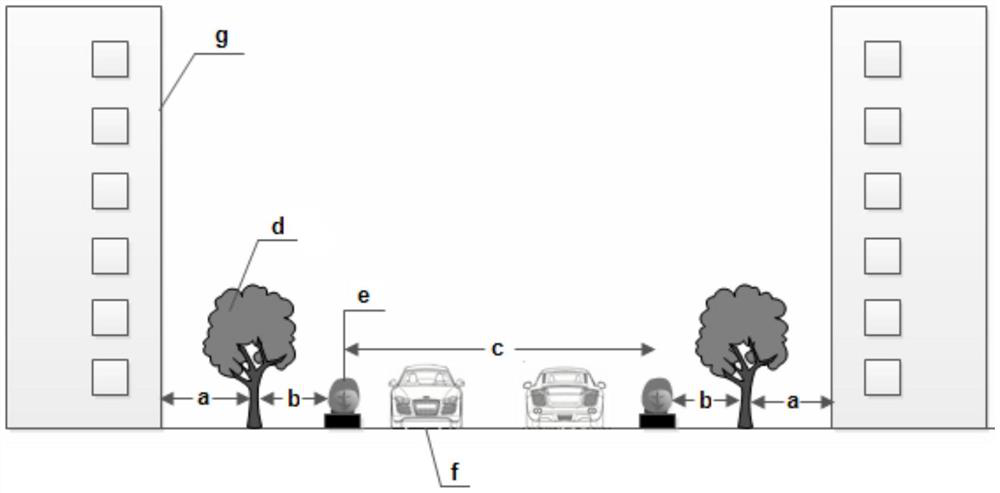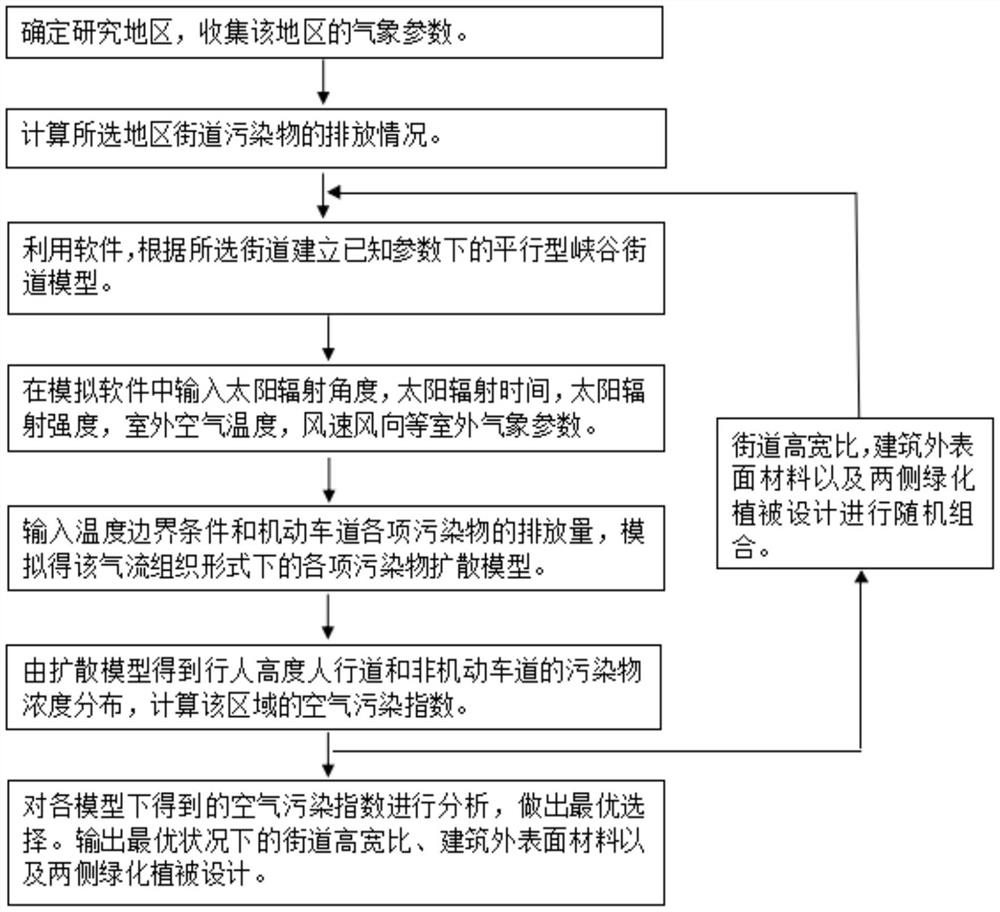Canyon street optimization design method based on pollutant concentration control
A pollutant concentration and optimization method technology, applied in design optimization/simulation, computer-aided design, calculation, etc., can solve the problem of not considering the impact of canyon street airflow and air environment quality, and street design on pedestrian health Impact and other issues
- Summary
- Abstract
- Description
- Claims
- Application Information
AI Technical Summary
Problems solved by technology
Method used
Image
Examples
Embodiment approach 1
[0065] Embodiment 1. Combining the attached figure 1 To illustrate this embodiment, this embodiment provides a method for optimizing canyon streets based on pollutant concentration control, and the method includes the following steps:
[0066] Step 1: Determine the city and area where the street is located, and collect meteorological data of the city for at least the past five years through a computer. The meteorological parameters include: solar radiation angle α, solar radiation time T, solar radiation intensity I, local wind speed v and wind direction and the outdoor air temperature t out ; Determine the area where the optimized street is located, the area includes: residential area, commercial area and cultural and educational area; determine the basic elements contained in the street, the basic elements of the street include: building type, street width, greening distribution and type;
[0067] Step 2: According to the determined basic elements of the street, establish a...
Embodiment approach 2
[0114] Embodiment 2, combined with the attached figure 1 Describe this embodiment. This embodiment is a further limitation of the canyon street optimization method based on pollutant concentration control described in Embodiment 1. The model of the simulation software described in step 2 is: fluent from ANSYS.
Embodiment approach 3
[0115] Implementation mode three, combined with the attached figure 1 Describe this embodiment. This embodiment is a further limitation of the canyon street optimization method based on pollutant concentration control described in Embodiment 1. The ratio of the building height on both sides to the street width described in step 3 is 0.8 -3 range.
PUM
 Login to View More
Login to View More Abstract
Description
Claims
Application Information
 Login to View More
Login to View More - R&D
- Intellectual Property
- Life Sciences
- Materials
- Tech Scout
- Unparalleled Data Quality
- Higher Quality Content
- 60% Fewer Hallucinations
Browse by: Latest US Patents, China's latest patents, Technical Efficacy Thesaurus, Application Domain, Technology Topic, Popular Technical Reports.
© 2025 PatSnap. All rights reserved.Legal|Privacy policy|Modern Slavery Act Transparency Statement|Sitemap|About US| Contact US: help@patsnap.com



